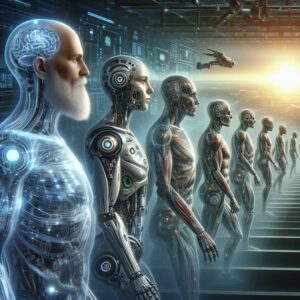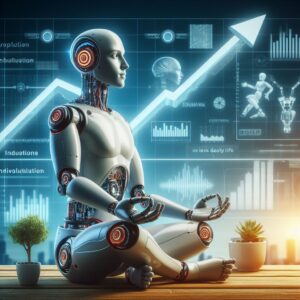Humanoid robots, once the realm of science fiction, are now becoming an integral part of various industries and daily life. These anthropomorphic machines, designed to resemble humans in appearance and behavior, are rapidly evolving, expanding their roles from controlled environments to real-world applications across diverse sectors. Their integration into industries and daily routines signifies a significant leap in robotics, promising transformative changes in workplaces and human interactions.

Roles in Industries
Humanoid robots are increasingly finding roles in industries, revolutionizing manufacturing, healthcare, and customer service. In manufacturing, these robots streamline production processes, handling tasks requiring precision and repetition. Collaborative humanoid robots work alongside human counterparts, enhancing efficiency and safety on factory floors. In healthcare, they assist with patient care, rehabilitation, and medical tasks, providing support to healthcare professionals and addressing labor shortages. Moreover, in customer service, humanoid robots serve as interactive assistants in retail, hospitality, and entertainment, offering guidance, information, and personalized experiences.
Advancements in Daily Life
The evolving roles of humanoid robots extend beyond industries, penetrating daily life in various ways. From household chores to educational support, these robots are becoming companions and aids in everyday routines. In households, they assist with cleaning, caregiving for the elderly, or tutoring children, alleviating mundane tasks and enhancing quality of life.
Challenges and Ethical Considerations
Despite their potential benefits, the integration of humanoid robots poses challenges and ethical considerations. Concerns about job displacement, privacy, and the ethical use of artificial intelligence (AI) in decision-making processes are subjects of ongoing debate. Additionally, ensuring safety, reliability.
Future Prospects and Impact: The Evolution
The future of humanoid robots holds immense promise. As technology advances, these robots will likely become more sophisticated, versatile, and capable of handling complex tasks. They will continue to augment human capabilities, contributing to increased efficiency and productivity across industries. Their role in daily life is anticipated to expand, providing assistance, companionship, and support in various facets of human existence, thereby reshaping the way we live and work.
Humanoid robots, once confined to the pages of science fiction, are now traversing into reality, making significant inroads into industries and daily life. In industries, these robots play pivotal roles in revolutionizing manufacturing, healthcare, and customer service. They streamline manufacturing processes, enhance patient care in healthcare settings.
Moreover, the influence of humanoid robots extends beyond industries, penetrating into the fabric of daily life. From household chores to educational environments, these robots are becoming fixtures in everyday routines. In homes, they assist with household tasks, caregiving, or educational support, easing burdens and enriching experiences. In educational settings, they act as assistants, supporting educators or providing personalized learning experiences, signaling a new way of learning and interacting with technology.

However, the integration of humanoid robots also presents challenges and ethical considerations. Concerns regarding job displacement, data privacy, and the ethical use of AI algorithms are topics of ongoing discourse. Ensuring safety protocols and ethical guidelines in their interactions with humans remains imperative for their widespread adoption and acceptance.
Yet, the future prospects for humanoid robots are immensely promising. As technological advancements surge forward, these robots are expected to become more sophisticated, adaptive, and capable of handling intricate tasks. Their integration into industries and daily life is projected to escalate, enhancing productivity, and reshaping human-robot interactions.
Conclusion: The Evolution
Humanoid robots are transcending the realm of science fiction to become instrumental in industries and daily routines. While their integration presents challenges, their potential to revolutionize industries, assist humans in various tasks, and improve quality of life is undeniable. As these robots continue to evolve and find new applications, their impact on industries and daily life is poised to be transformative.
For more Article like this, visit our Website Here
